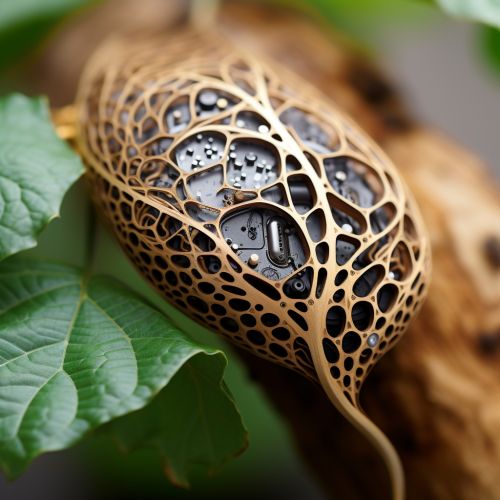Advances in Biomimetic Sensors and Actuators
Introduction
Biomimetics, or biomimicry, is the study and imitation of nature's methods, mechanisms, and processes to solve complex human problems. In recent years, the field has seen significant advances, particularly in the development of sensors and actuators. These devices, inspired by biological systems, have found applications in a variety of fields, including robotics, medical devices, and environmental monitoring.


Biomimetic Sensors
Biomimetic sensors are devices that mimic the sensory functions of living organisms. These sensors are designed to detect specific physical or chemical stimuli, much like the sensory organs in animals and plants. The development of biomimetic sensors has been driven by the need for more sensitive, selective, and efficient sensing devices.
Types of Biomimetic Sensors
There are several types of biomimetic sensors, each designed to mimic a specific biological sensory function. These include:
- Chemical sensors: These sensors mimic the olfactory and taste systems of animals. They are designed to detect specific chemicals or chemical changes in the environment.
- Mechanical sensors: These sensors mimic the tactile and auditory systems of animals. They are designed to detect mechanical changes, such as pressure, vibration, or sound.
- Optical sensors: These sensors mimic the visual systems of animals. They are designed to detect light and other electromagnetic radiation.
Advances in Biomimetic Sensors
Recent advances in biomimetic sensors have led to the development of more sensitive and selective devices. For example, researchers have developed chemical sensors that can detect specific molecules at very low concentrations, much like the olfactory system of a dog. Similarly, advances in materials science have led to the development of mechanical sensors that can detect minute changes in pressure or vibration, much like the tactile system of a spider.
Biomimetic Actuators
Biomimetic actuators are devices that mimic the movement or action of living organisms. These actuators are designed to convert some form of energy, such as electrical or thermal energy, into mechanical motion. The development of biomimetic actuators has been driven by the need for more efficient, responsive, and adaptable movement devices.
Types of Biomimetic Actuators
There are several types of biomimetic actuators, each designed to mimic a specific biological movement or action. These include:
- Muscle-inspired actuators: These actuators mimic the contraction and relaxation of muscles. They are designed to generate force and movement.
- Plant-inspired actuators: These actuators mimic the slow, steady movement of plants. They are designed to generate movement in response to environmental stimuli, such as light or moisture.
- Cell-inspired actuators: These actuators mimic the movement of cells. They are designed to generate movement at the micro or nano scale.
Advances in Biomimetic Actuators
Recent advances in biomimetic actuators have led to the development of more efficient and adaptable devices. For example, researchers have developed muscle-inspired actuators that can generate force and movement with high efficiency, much like the muscles in animals. Similarly, advances in materials science have led to the development of plant-inspired actuators that can respond to environmental stimuli with precise movement, much like the movement of plants.
Applications of Biomimetic Sensors and Actuators
The advances in biomimetic sensors and actuators have led to their application in a variety of fields. These include:
- Robotics: Biomimetic sensors and actuators are used in robots to enhance their sensing and movement capabilities. For example, robots equipped with biomimetic sensors can detect changes in their environment more accurately, while those equipped with biomimetic actuators can move more efficiently and adaptably.
- Medical devices: Biomimetic sensors are used in medical devices to monitor physiological parameters, such as blood pressure or glucose levels. Similarly, biomimetic actuators are used in medical devices to generate movement, such as in prosthetic limbs or surgical robots.
- Environmental monitoring: Biomimetic sensors are used in environmental monitoring to detect changes in environmental conditions, such as air quality or water pollution. These sensors can provide more accurate and timely information, helping to protect the environment and public health.
Conclusion
The field of biomimetics has seen significant advances in recent years, particularly in the development of sensors and actuators. These devices, inspired by biological systems, offer a promising solution to many of the challenges faced by modern society. As research in this field continues, we can expect to see even more innovative and effective biomimetic devices in the future.
